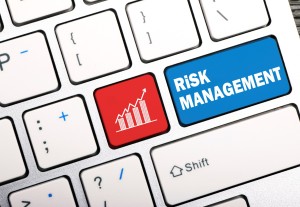Nowadays, are enough businesses as secure as they could be? After all, even though many businesses do invest in protection and cybersecurity, they might not update it as regularly as they could. On the other hand, you also have companies who are too laid back and assume their business isn’t susceptible to threats. This is especially true when it comes to small businesses, who are often a much easier target for cybercriminals.
With that said, this is why you need to keep your business secure, and use risk management in the process as well. By definition, risk management is defined as the process of identifying, assessing and controlling threats to an organization’s capital and earnings. With that said, one of the biggest reasons that you need to remain secure in the workplace, is because threats can be very unpredictable. Even more so, it’s time to start taking a proactive approach in dealing with threats, as opposed to a reactive approach. If you’re not familiar with these terms, it’s time to look a little more into what they mean. On top of that, we’ll also look at one of the best proactive workplace strategies out there.
The Difference Between the Two
First of all, what is the major difference between proactive and reactive? For the former, you’re preparing for threats and taking action before anything even happens. With a reactive approach, on the other hand, you don’t take action until after a threat occurs. The latter is why so many businesses have their data compromised regularly. As a common business practice, you need to actively work toward taking action even before something occurs. With that said, here are some of the best proactive workplace strategies.
#1. Backup Disaster Recovery
One of the best proactive approaches to securing your business, is through backing up your data on a regular basis. Aside from using a USB flash drive, always make sure to invest in cloud computing as well. A storing method that backs up all data over the Internet, you don’t have to worry about the data on your hard drive. Besides, all your data is stored virtually. Not to mention you can access this virtual data via any device with an Internet connection.
By storing your data on a regular basis, you’re actively preparing for any incidents that could occur. Speaking of which, cloud computing is also important, because it’s a great backup disaster recovery method. As an example, let’s say that your computer became infected with ransomware or any virus which threatens your sensitive info. Despite the threat of losing all files on your hard drive, recovering all your data would still be a cinch. Just access a non-infected device, and open your virtual files from there. Having all files erased on your hard drive, means nothing if there are copies stored elsewhere. This is why a proactive approach is important, if a business owner was reactive in these situations, they would wait until they were infected before taking any action.
#2. Anti-Virus Software
Anti-virus software is also a proactive approach to dealing with threats and incidents in the workplace. Though complex in nature, how the software operates is as basic as it comes, easily neutralizing any threat that infects your computer. On top of that, anti-virus programs are also actively involved while you’re surfing the web, even giving you warnings about which websites are dangerous. McAfee has a feature that tells you turn back if you visit an unsuspecting website, and Kaspersky monitors the search results of each web browser. The safe websites are marked in green, and the dangerous sites have a red notification.
#3. Educating Your Employees
Considering that being proactive means that you’re actively involved in making sure threats are neutralized, it would also make sense that you educate your employees. That way, you’re keeping the business even more secure. It’s one thing if a business owner is preventing threats before they happen, which is definitely important. However, imagine the possibilities of every employee working from different angles to ensure the business is completely secure. It’s not just enough that you educate them, either, but make sure they are actively taking action.
Between backing up your data, the use of anti-virus software, and educating your employees, these are some useful tips that will lead to your business being more proactive. Don’t wait for the threats to come to come, but be prepared at all times.
For more information about backup disaster recovery, as well as other useful proactive workplace strategies in the workplace, feel free to contact us today at SystemsNet. We look forward to hearing from you, and assisting you in the best way possible.

